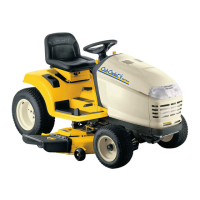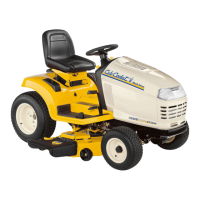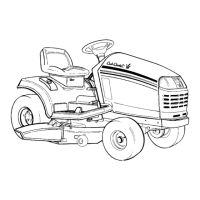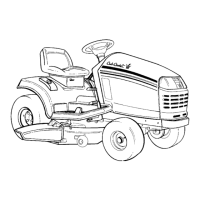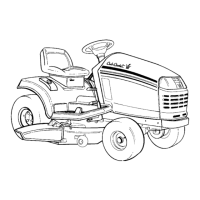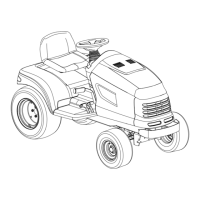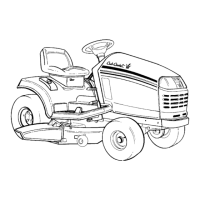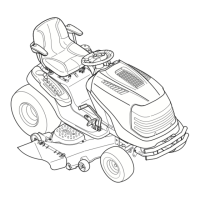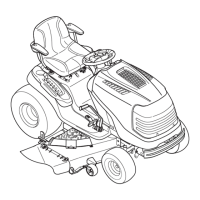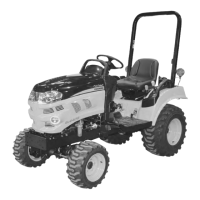Cutting Blades
WARNING! Shut the engine off and remove
ignition key before removing the cutting blade(s) for
sharpening or replacement. Protect your hands by
using heavy gloves when grasping the blade
WARNING! Periodically inspect the blade and/or
spindle for cracks or damage, especially after you’ve
struck a foreign object. Do not operate the machine
until damaged components are replaced.
To remove the blades, proceed as follows.
Remove the deck from beneath the tractor, (refer to 1.
Cutting Deck Removal earlier in this section) then gently
flip the deck over to expose its underside.
Place a block of wood between the center deck housing 2.
baffle and the cutting blade to act as a stabilizer.
See Fig. 7-5.
Remove the flange lock nut that secures the blade to the 3.
spindle assembly. See Fig. 7-5.
To properly sharpen the cutting blades, remove equal 4.
amounts of metal from both ends of the blades along the
cutting edges, parallel to the trailing edge, at a 25°- to 30°
angle. Always grind each cutting blade edge equally to
maintain proper blade balance. See Fig. 7-6.
CAUTION: If the cutting edge of the blade has
previously been sharpened, or if any metal
separation is present, replace the blades with new
ones.
WARNING! A poorly balanced blade will cause
excessive vibration, may cause damage to the
tractor and/or result in personal injury.
Test the blade’s balance using a blade balancer. Grind 5.
metal from the heavy side until it balances evenly.
NOTE: When replacing the blade, be sure to install the
blade with the side of the blade marked ‘‘Bottom’’ (or with
a part number stamped in it) facing the ground when the
mower is in the operating position.
CAUTION: Use a torque wrench to tighten the
blade spindle hex flange nut to between 70 ft-lbs
and 90 ft-lbs.
Flange Lock Nut
Block of Wood
Figure 7-5
Figure 7-4
Figure 7-6
25Se c t i o n 7 — Se r v i c e
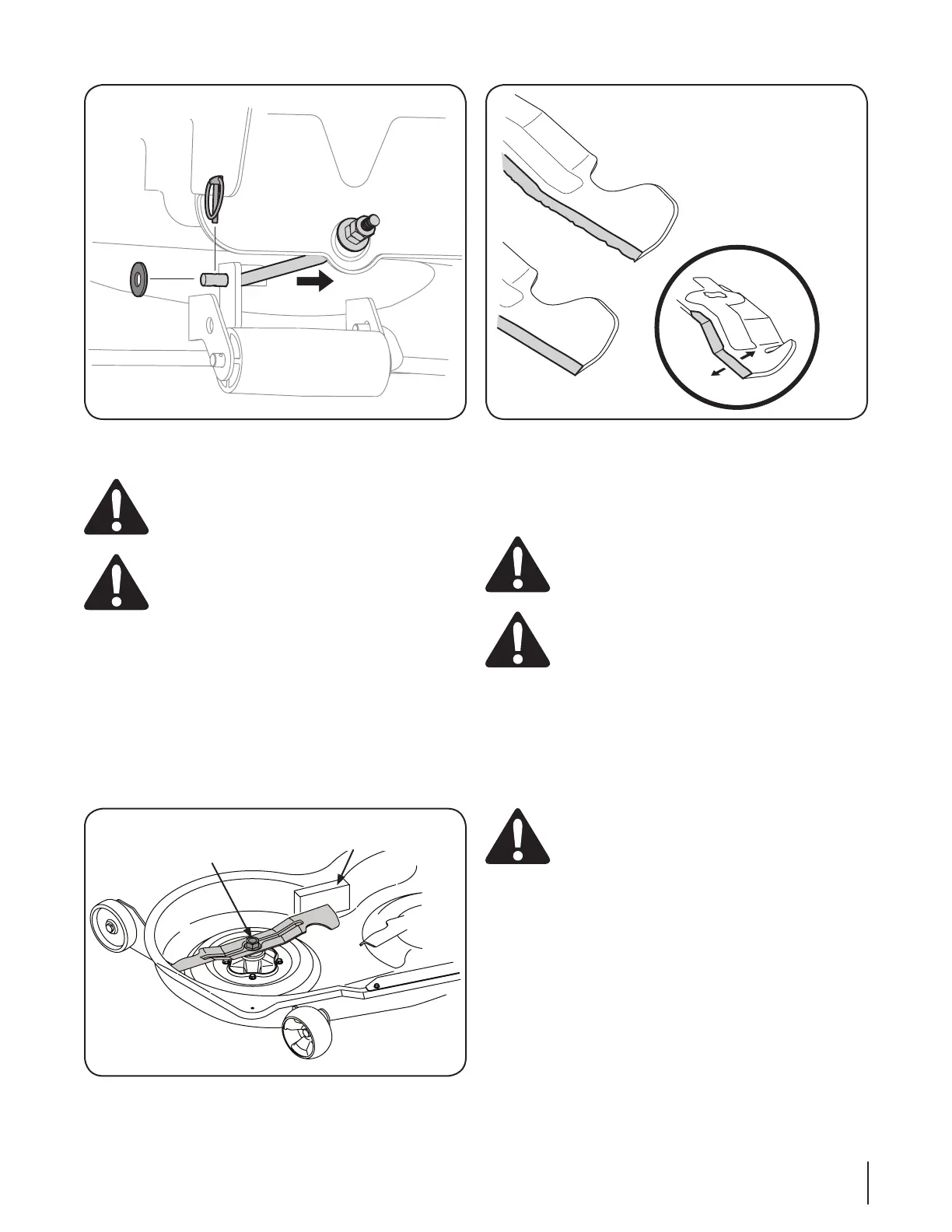